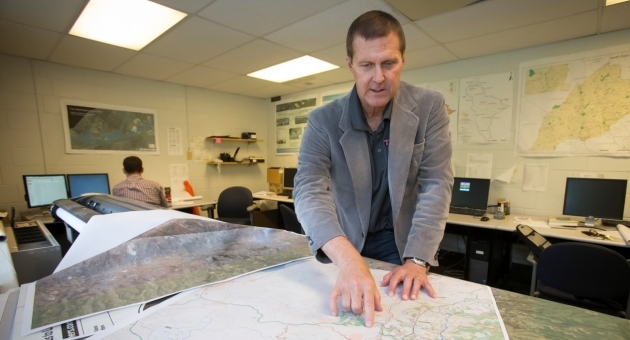Temple professor visits Middle East for revitalization project

Professor of Community and Regional Planning Jeffrey Featherstone is lending his expertise in one of the most politically and culturally complex regions of the world.
From now through June 14, Featherstone is leading an international team of city planners to explore the West Bank of the Jordan River and recommend revitalization efforts. He is also providing technical assistance to a second team in the Gaza Strip. The United Nations–approved project is being spearheaded by the International Society of City and Regional Planners (ISOCARP) in cooperation with UN-Habitat and the UN Development Programme (UNDP).
ISOCARP sends Urban Planning Advisory Teams (UPATs) to communities throughout the world to examine areas of greatest need and develop action plans. The West Bank and Gaza UPATs will focus on plans to enhance public transportation, improve infrastructure and protect natural resources.
“Due to the volatility of the region, a great deal of the urban infrastructure in many areas of Gaza and the West Bank are in a constant state of disrepair. The water and sewer lines and transportation corridors in Gaza are essentially nonfunctioning,” Featherstone said.
“The Jordan River watershed overlaps five countries: Lebanon, Jordan, Israel, Syria and Egypt. Many wars in the region have been wars over water,” Featherstone said. “Almost all of the water from the river is being diverted for urban and agricultural uses, and its flow is only a trickle when it discharges to the Dead Sea, which continues to drop at an average of one meter per year.”
In Gaza, Featherstone said, more than 90 percent of the water pumped out of the ground is undrinkable as saltwater intrusion has significantly degraded the aquifer.
“Fortunately, recent strides made by the Israelis in desalination and wastewater reuse have greatly increased supplies for urban and agricultural uses, but those additional supplies are the subject of heightened disputes,” he said.
Community support will be essential for any of the action plans developed by the ISOCARP to become a reality, Featherstone said.
“We will be holding several community design workshops and will meet with national and local leaders and area academic institutions to sketch out infrastructure improvements—what an urban corridor might look like and how that could be an incubator for commercial and industrial activities,” he said.
During his tenure as director of Temple’s Center for Sustainable Communities, Featherstone has gained years of experience in overseeing projects that cross municipal and political borders. He was one of the leads on a study of the Pennypack Creek watershed, which led to FEMA remapping the flood plains within a 12-municipality region.
He is currently guiding comprehensive stormwater management research within Philadelphia and five watersheds throughout the Philadelphia region—projects supported by $1 million grants from the U.S. Environmental Protection Agency and the William Penn Foundation.
- Jim Duffy